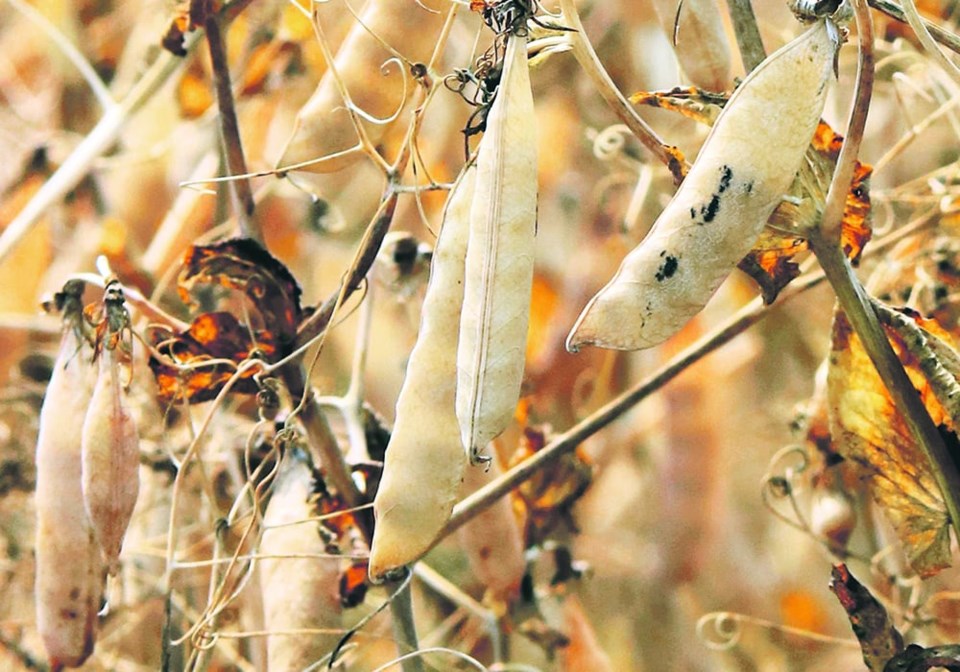SASKATOON — Australia’s desi chickpeas could provide stiff competition for Canada’s yellow peas in India this year.
Farmers Down Under could be harvesting a massive crop based on early-season expectations.
The Australian Bureau of Agricultural and Resource Economics and Sciences (ABARES) is forecasting 1.15 million tonnes of chickpea production in 2024-25.
That would be more than double last year’s output, 46 percent above the 10-year average and the second biggest crop in history behind the two million tonnes produced in 2016-17.
The trade thinks it will be even higher than the government is forecasting.
Peter Wilson, chair of the Grains Australia Pulses Council, said a significant area in the northern part of the cropping region is being diverted from cereals to desi chickpeas.
“Based on the seed going in the ground today, I’d say we’d achieve between 1.3 to 1.6 million metric tonnes,” he said during a recent discussion on India’s pulse situation moderated by the Global Pulse Confederation.
Brad McConnachy, pulses trade manager with Archer Daniels Midland, agreed with Wilson’s forecast, adding that he is optimistic Australia will have a good desi chickpea export program to India.
“It’s exciting to be back in that market,” he said in a GPC article summarizing the discussion.
India is short of desi chickpeas. The government estimates the 2023-24 crop at 12.16 million tonnes, which would be in line with the previous year’s 12.27 million tonnes.
But analysts think it is much smaller than that. G. Chandrashekhar, senior editor with the Hindu Business Line,
estimated in a recent article he wrote for Saskatchewan Pulse Growers that the crop is between 10.8 and 11.3 million tonnes.
He believes that is why the India government lifted the quantitative and tariff restrictions on yellow peas through the end of October. Yellow peas can be substituted for desi chickpeas in some Indian dishes.
India’s pulse imports are expected to reach a new high of 4.5 million tonnes in 2023-24, due in a large part to increased yellow pea and lentil purchases.
Will Watchorn, global head of pulses at Viterra, noted during the GPC discussion that yellow pea prices have risen to the point where they have priced themselves out of the feed market.
That is increasing the supply of peas available for the human consumption market in India.
Watchorn said Russia’s yellow pea plantings are up 15 to 20 percent this year, but it is dry in the south, which will reduce yield. Lower yields and low carry-in means Russia’s supplies should be unchanged from last year, despite the increased acres.
Watchorn expects India to also import peas from non-traditional origins such as the EU, the Baltics and Argentina.
India should be an active buyer of lentils in the upcoming year. McConnachy was not optimistic about Australia’s lentil outlook.
ABARES is forecasting 1.6 million tonnes of production, the same as last year, despite an expansion in planted area. That would still be more than double the 10-year average.
But McConnachy said production may drop due to dryness in the southern lentil and bean production regions.
“We’ll have to watch winter rainfall events that may cause production to slip coming into the 2024 harvest,” he said during the GPC discussion.
Peter Semmler, a trader with Australian Global Brokerage, said lentil planting is up 10 percent compared to last year, but the increase is happening on marginal land.
Lentils are primarily grown in South Australia and Victoria, he said in an article he wrote for pulse growers. There has been no rain in South Australia for five months but Victoria has good subsoil moisture.
“Consensus view amongst traders is an estimated production of about 1.3 million tonnes, providing reasonable rainfall, which may be a big call,” he said.
Tim McGreevy, chief executive officer of the American Pulse Association, said there was a substantial increase in U.S. lentil plantings.
Growers in that country seeded 762,000 acres of the crop, a 40 percent increase. Most of that increase was green lentils.
“If yields hold and there’s no drought, we’re expecting 340,000 to 350,000 tonnes,” he said during the GPC discussion.
That would be a big increase from the 260,450 tonnes of lentils harvested last year.
McGreevy is forecasting 900,000 tonnes of U.S. pea production, up from 820,370 tonnes last year and 245,000 to 255,000 tonnes of kabuli chickpeas, compared to 214,190 tonnes last year.
Contact [email protected]



